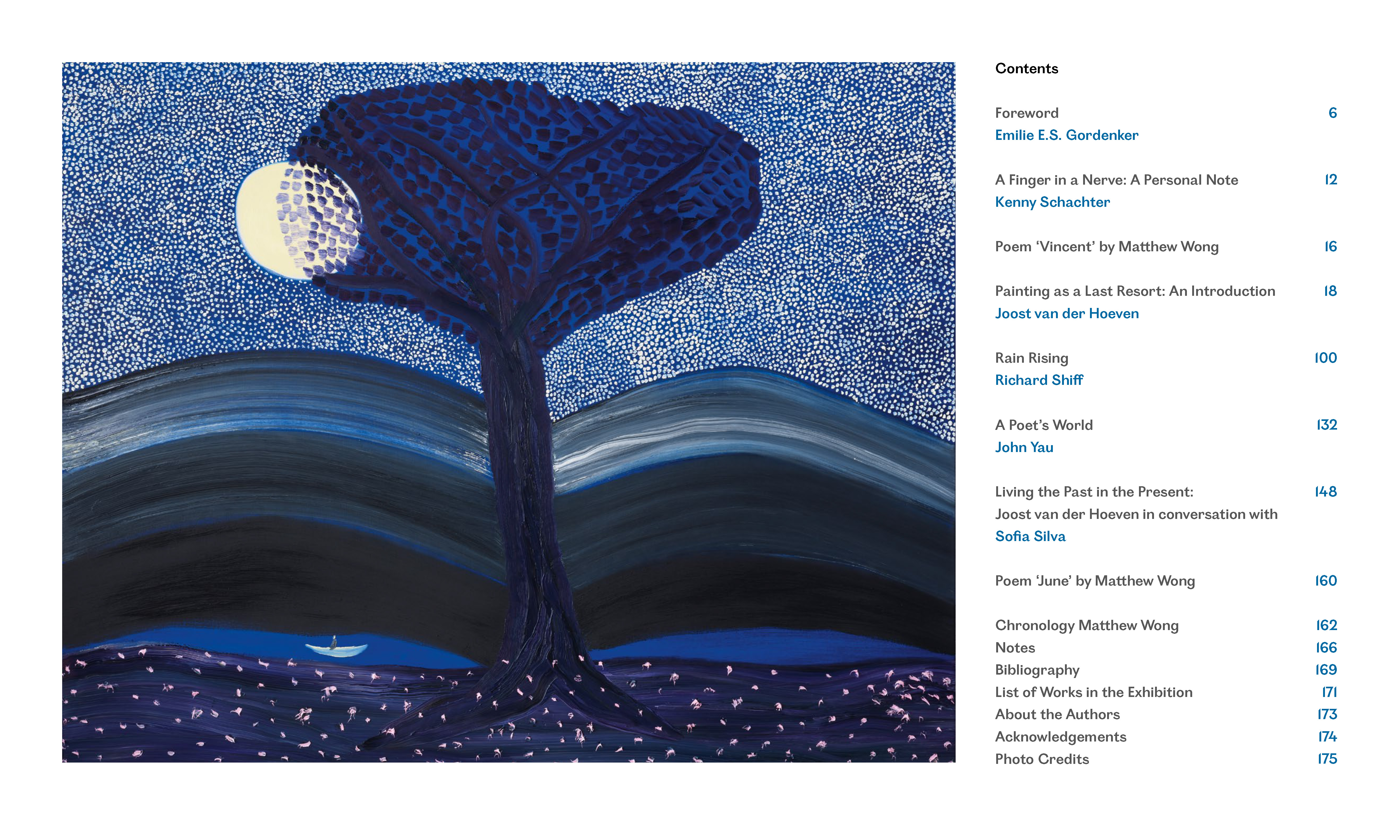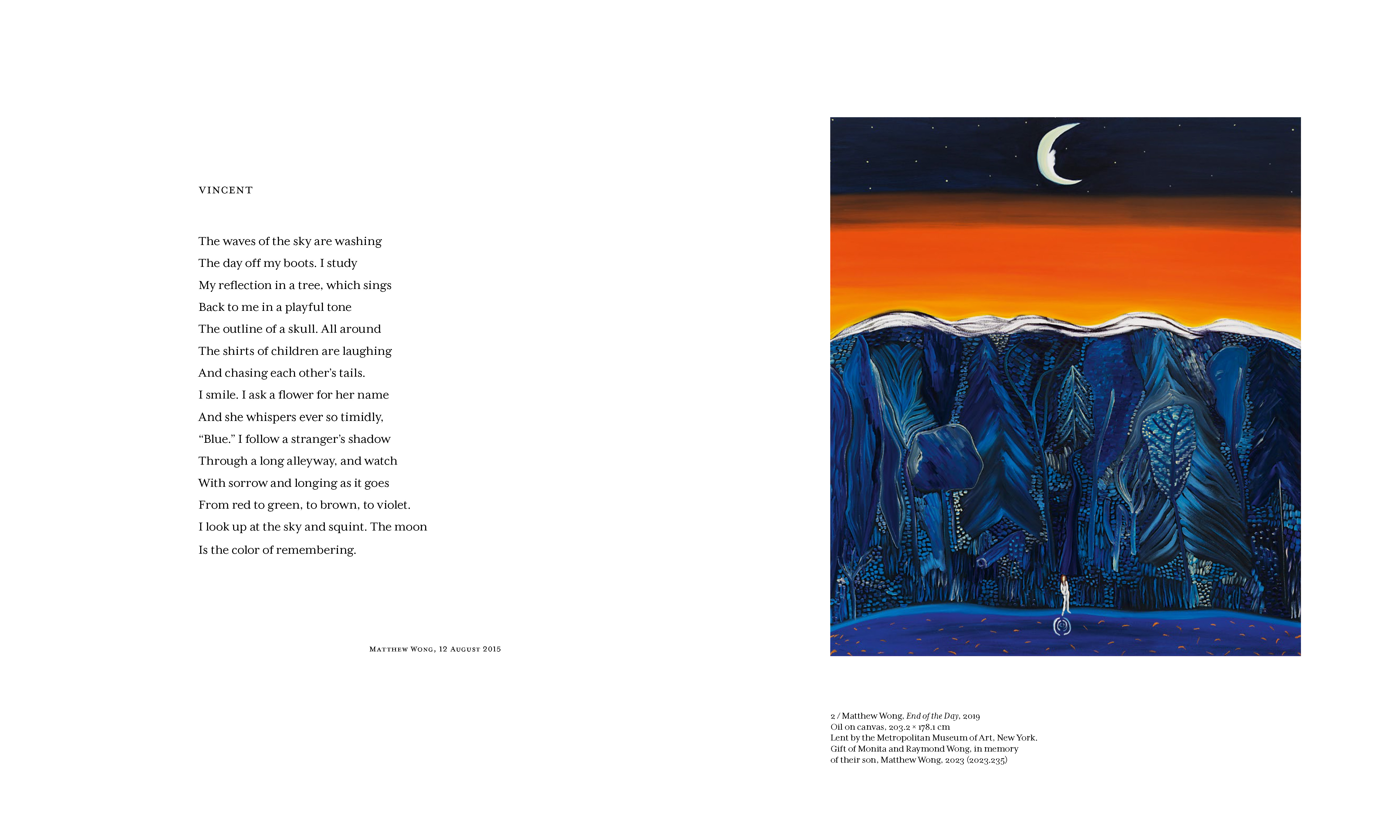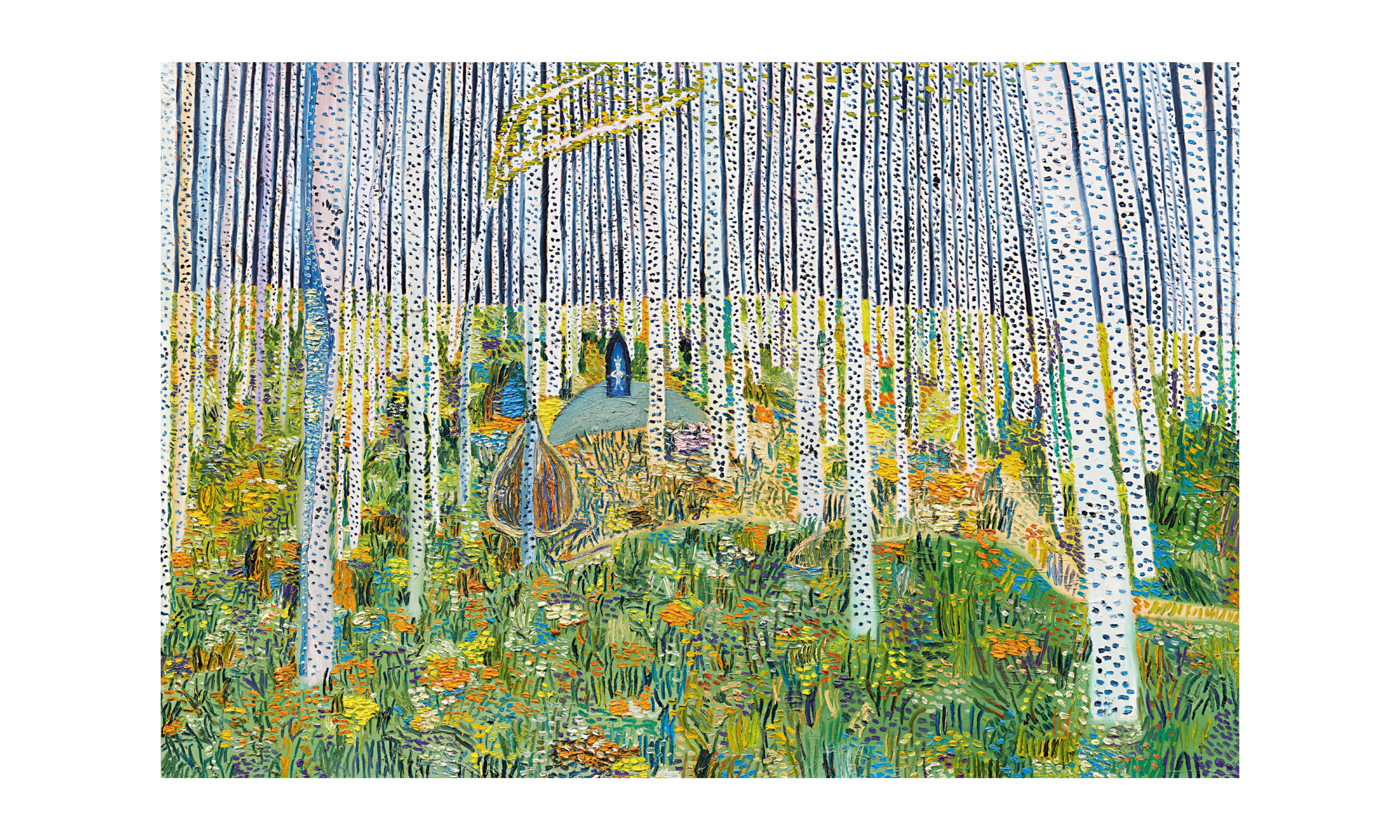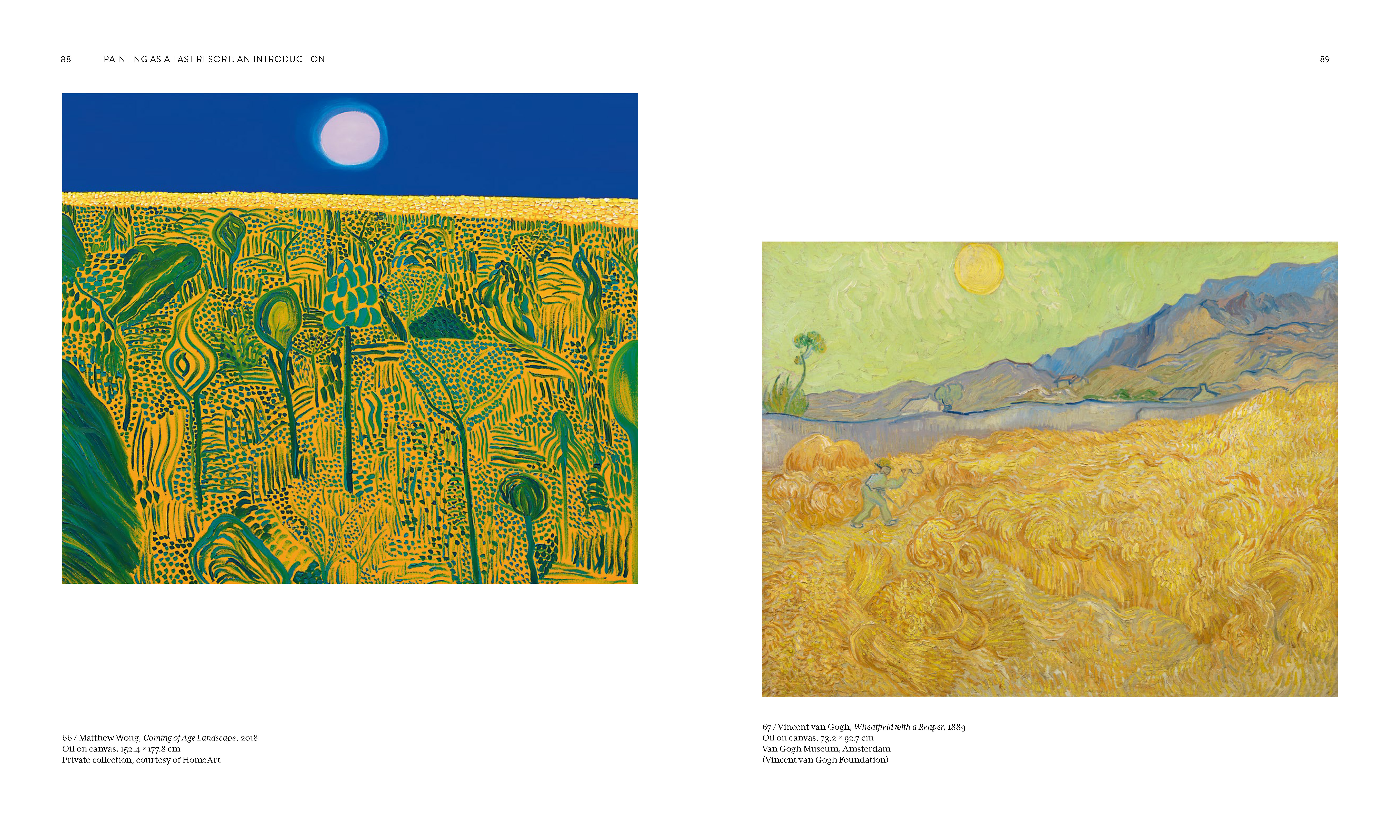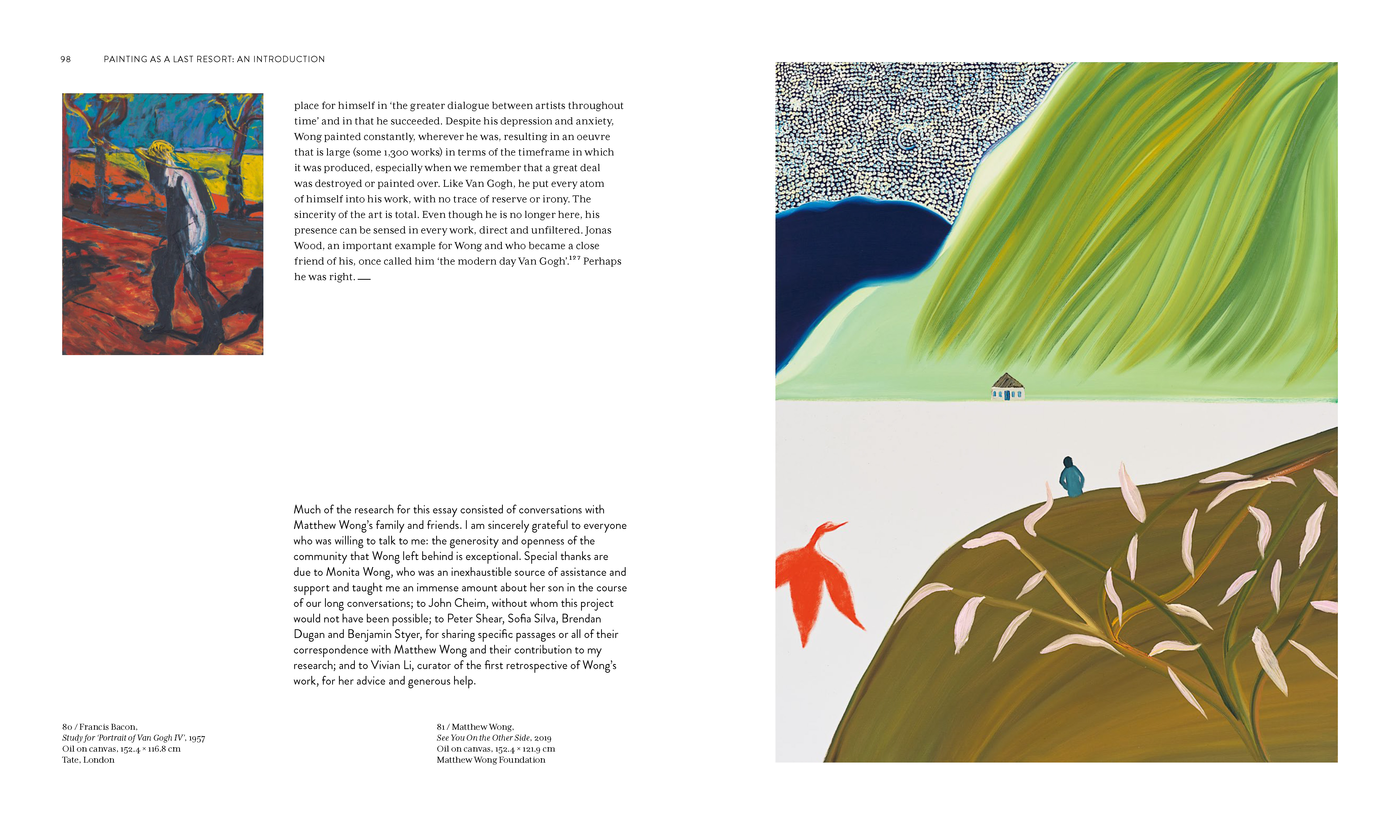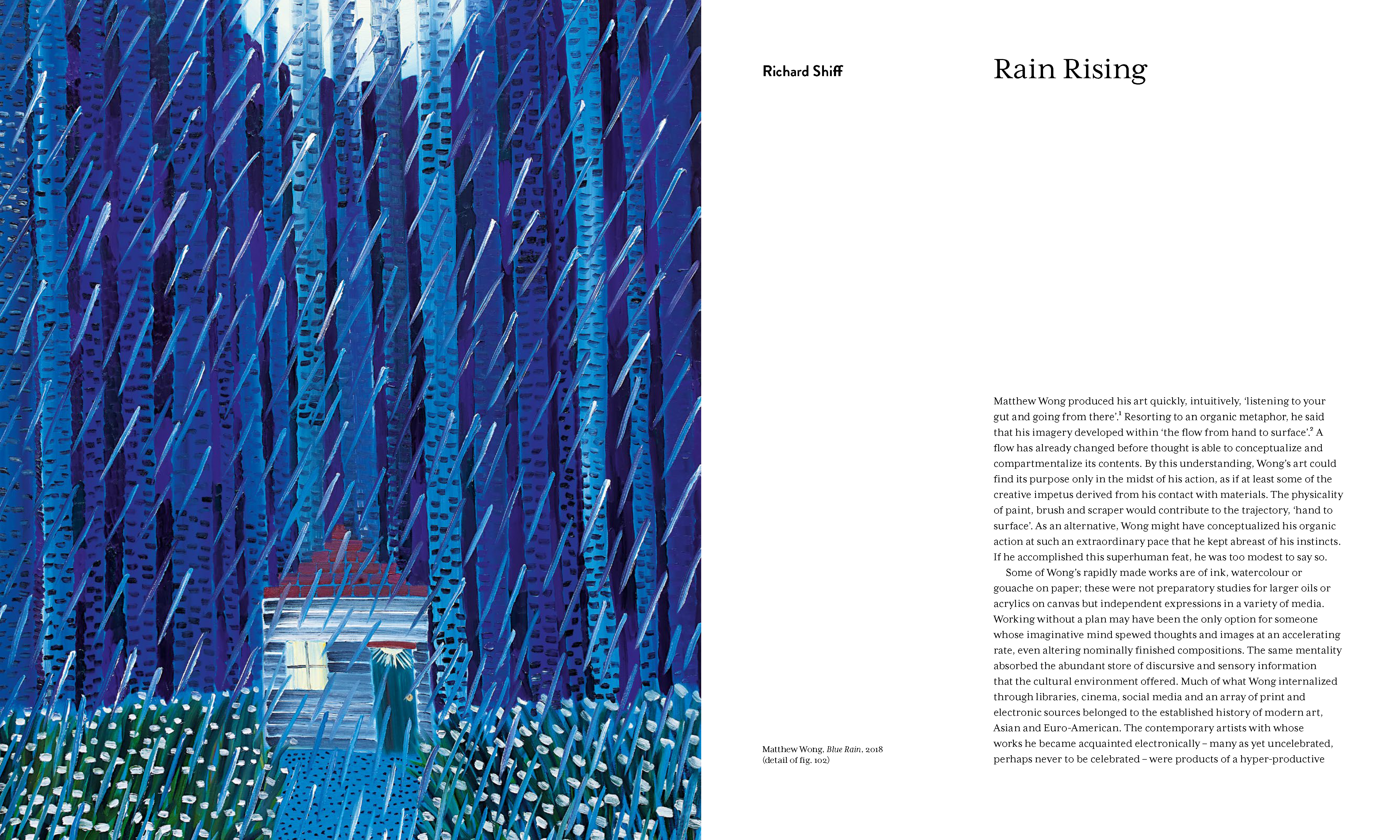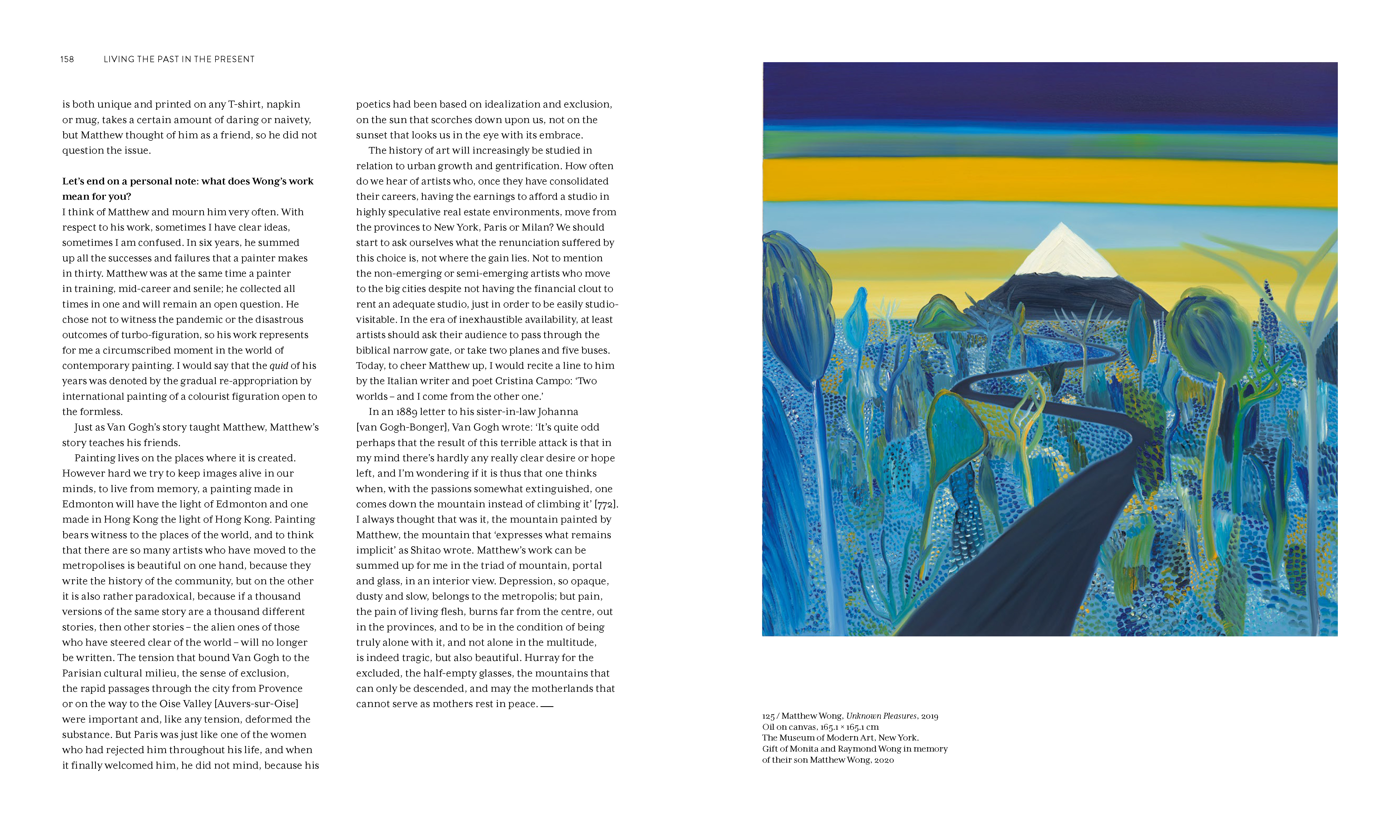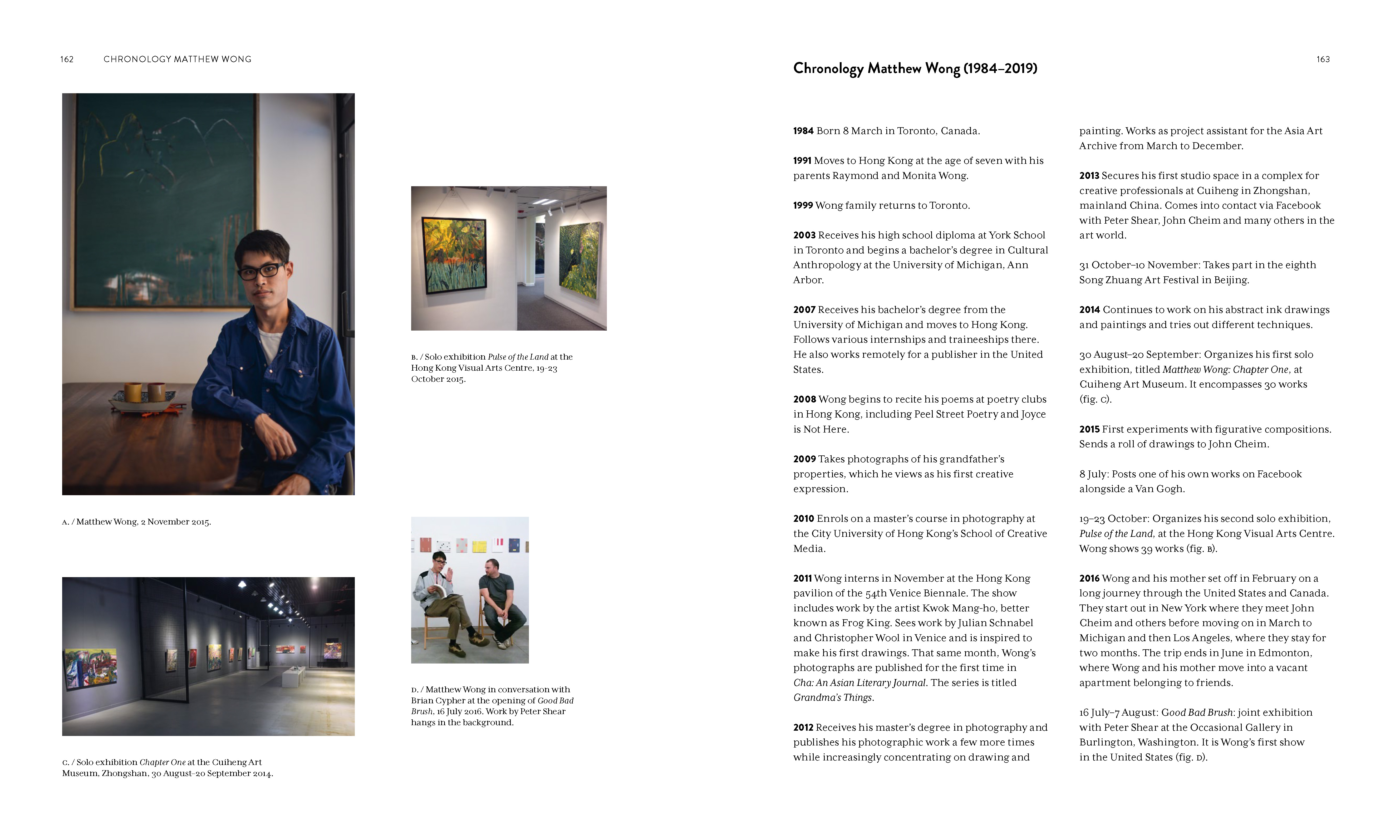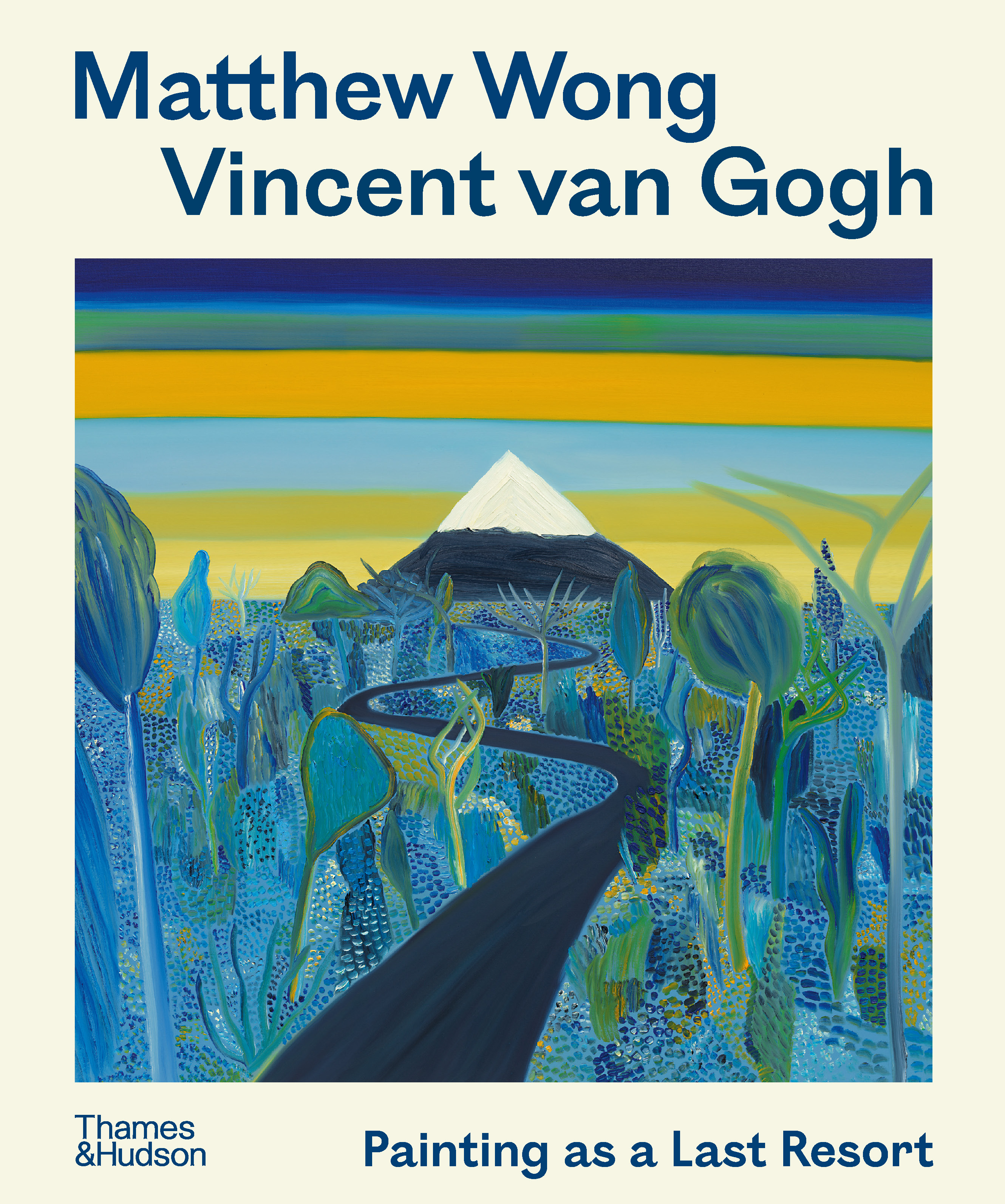Shortly before his early death, Canadian artist Matthew Wong (1984–2019) emerged as a phenomenon. He started drawing and painting in 2011, at the age of twenty-seven, and within the space of just a few years had developed a highly personal style using intense colors to paint imaginative landscapes.
Wong’s expressively lyrical works were inspired by both traditional Chinese painting and Western art. He was especially influenced by Vincent van Gogh (1853–1890), not only in terms of his painting style and choice of motifs, but also in some aspects of his life. Both artists were self-taught, and both faced mental health issues. Wong saw his own life reflected in that of Van Gogh, and once said: "I see myself in him. The impossibility of belonging in this world."
Published to accompany an exhibition at the Van Gogh Museum, Amsterdam, Matthew Wong–Vincent van Gogh explores the artistic and personal connection between the two artists, bringing around forty-five paintings and drawings by Wong into dialogue with a group of Van Gogh masterpieces. Kenny Schachter, who knew Wong, contributes a personal introduction, which is followed by essays exploring the artists' biographical and artistic kinship.
Contributors
Kenny Schachter
Author
Kenny Schachter is a New York-based artist, writer, and curator.
Joost van der Hoeven
Author
Joost van der Hoeven is a researcher at the Van Gogh Museum, Amsterdam.
Richard Shiff
Author
Richard Shiff is chair in art at the University of Texas at Austin. His seminal publication Cézanne and the End of Impressionism: A Study of the Theory, Technique, and Critical Evaluation of Modern Art explored the relationship between late nineteenth-century artists and their subjective relation to reality as a source for their art.
John Yau
Author
John Yau is an American poet and art critic.


